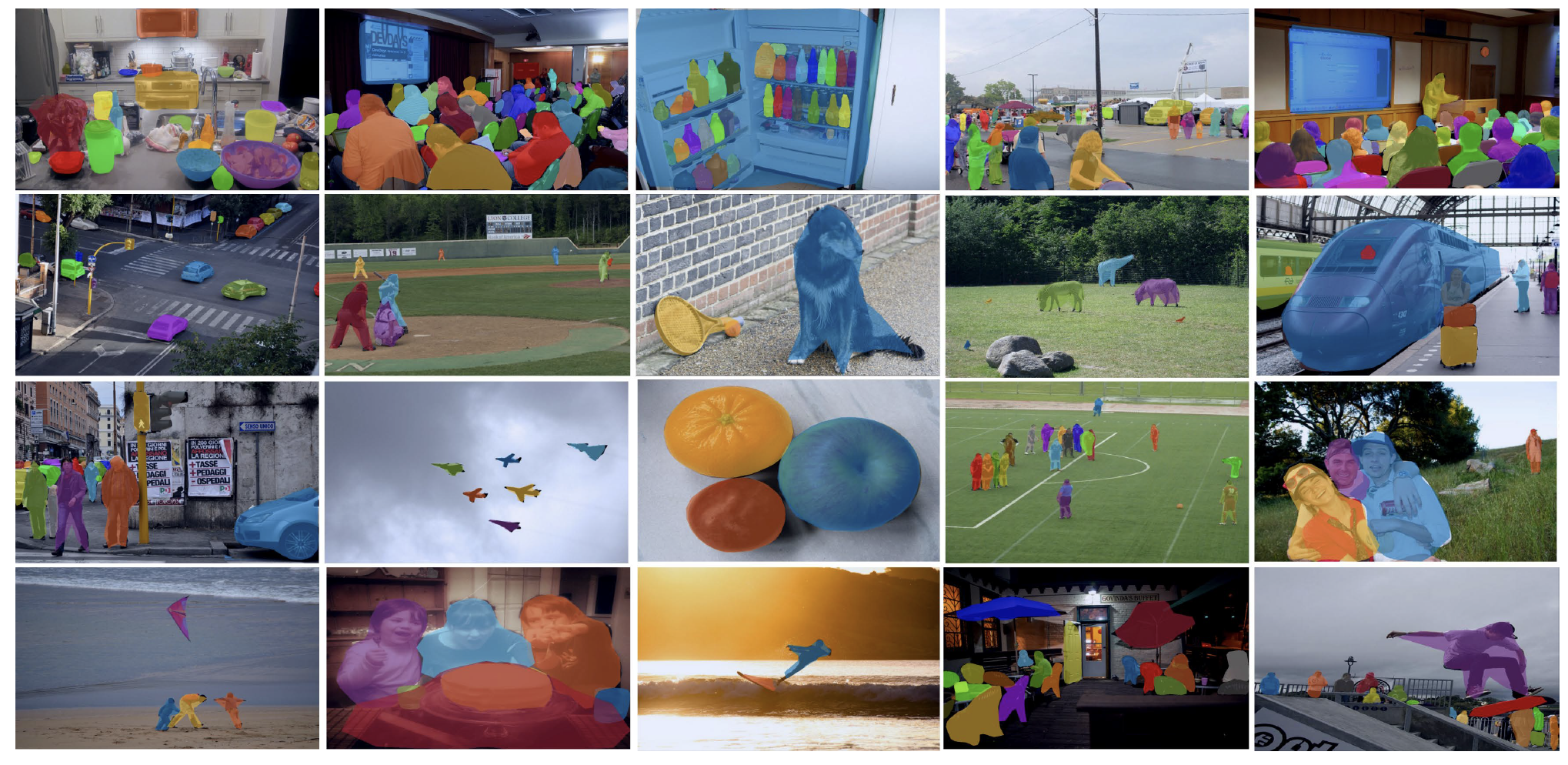The code for implementing the PolarMask.
- Simple: Anchor-free, single-stage and can be easily embeded to many detectors such as FCOS.
- Unify: Our PolarMask first make object detection problem and instance segmentation problem into a unified dense regression problem.
- Inference Fast: Our PolarMask-R50 can achieve 29.1AP(800) / 23.9FPS, 27.6AP(600) / 34.1FPS, 22.9AP(400) / 46.7FPS on 1 V100 GPU.
- PolarMask-X101 with 2x and multi-scale train can achieve 33.5 mAP. Code and trained models with 2x and mstrain for R50,R101 and X101 are released.(2019.10.19)
All the training time is measured on 32 Maxwell TitanX or 4 V100 GPUs, we found they achieve very similar performance.
All the inference speed is measured using converged models on 1 Maxwell TitanX / V100 GPU. We only report the model inference time.
Note that we found the V100 is nearly three times faster than TitanX. More details can refer to paper Table 1(f).
For 32 gpus, we set 2000 iters to warmup instead of 500. So the total epoches is 14 for 1x.
And the performance is similar to 4gpus. Most of experiments are run on 32gpus in paper to fasten the process.
The results are test on minival set.
Trained models can be download in Google Drive.
| Backbone | Style | GN | MS train | Lr schd | GPUs | Inf time (fps) | mask AP |
|---|---|---|---|---|---|---|---|
| R-50 | caffe | Y | N | 1x | 4 | 8.9/23.9 | 28.9 |
| R-101 | caffe | Y | N | 1x | 4 | - | 30.7 |
| X-101 | pytorch | Y | N | 1x | 4 | - | 32.5 |
| Backbone | Style | GN | MS train | Lr schd | GPUs | Inf time (fps) | mask AP |
|---|---|---|---|---|---|---|---|
| R-50 | caffe | Y | N | 1x | 32 | 8.9/23.9 | 29.1 |
| R-101 | caffe | Y | N | 1x | 32 | - | 30.4 |
| X-101 | pytorch | Y | N | 1x | 32 | - | 32.6 |
| R-50 | caffe | Y | Y | 2x | 32 | 8.9/23.9 | 30.5 |
| R-101 | caffe | Y | Y | 2x | 32 | - | 31.9 |
| X-101 | pytorch | Y | Y | 2x | 32 | - | 33.5 |
Notes:
- The X-101 backbone is X-101-64x4d.
- Dataloader is rewrited and it is slow because generating labels for rays is complex. We will try to speed up it in the futher.
- All models are trained with 1x and without data augmentation. We will release 2x with ms train model in the future.
Our PolarMask is based on mmdetection. Please check INSTALL.md for installation instructions.
Train:
sh ./tools/dist_train.sh configs/polarmask/4gpu/polar_768_1x_r50.py 4 --launcher pytorch --work_dir ./work_dirs/polar_768_1x_r50_4gpu
srun -p VI_ID_TITANX --job-name=PolarMask --gres=gpu:4 --ntasks=32 --ntasks-per-node=4 --kill-on-bad-exit=1 python -u tools/train.py configs/polarmask/32gpu/polar_768_1x_r50.py --launcher=slurm --work_dir ./work_dirs/polar_768_1x_r50_32gpu
Test:
sh tools/dist_test.sh configs/polarmask/4gpu/polar_768_1x_r50.py ./work_dirs/polar_768_1x_r50_4gpu/latest.pth 4 --out work_dirs/trash/res.pkl --eval segm
Any pull requests or issues are welcome.
Please consider citing our paper in your publications if the project helps your research. BibTeX reference is as follows.
@article{xie2019polarmask,
title={PolarMask: Single Shot Instance Segmentation with Polar Representation},
author={Xie, Enze and Sun, Peize and Song, Xiaoge and Wang, Wenhai and Liu, Xuebo and Liang, Ding and Shen, Chunhua and Luo, Ping},
journal={arXiv preprint arXiv:1909.13226},
year={2019}
}
For academic use, this project is licensed under the 2-clause BSD License - see the LICENSE file for details. For commercial use, please contact the authors.


